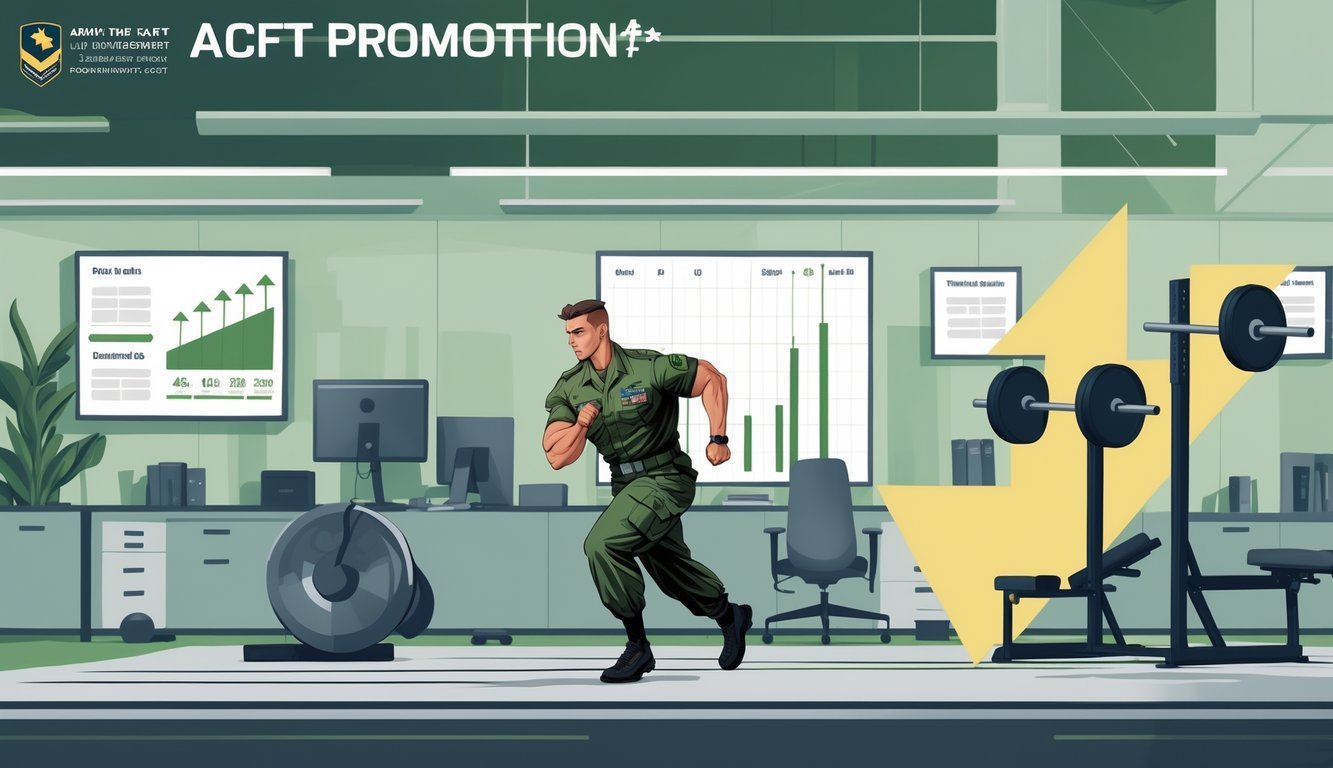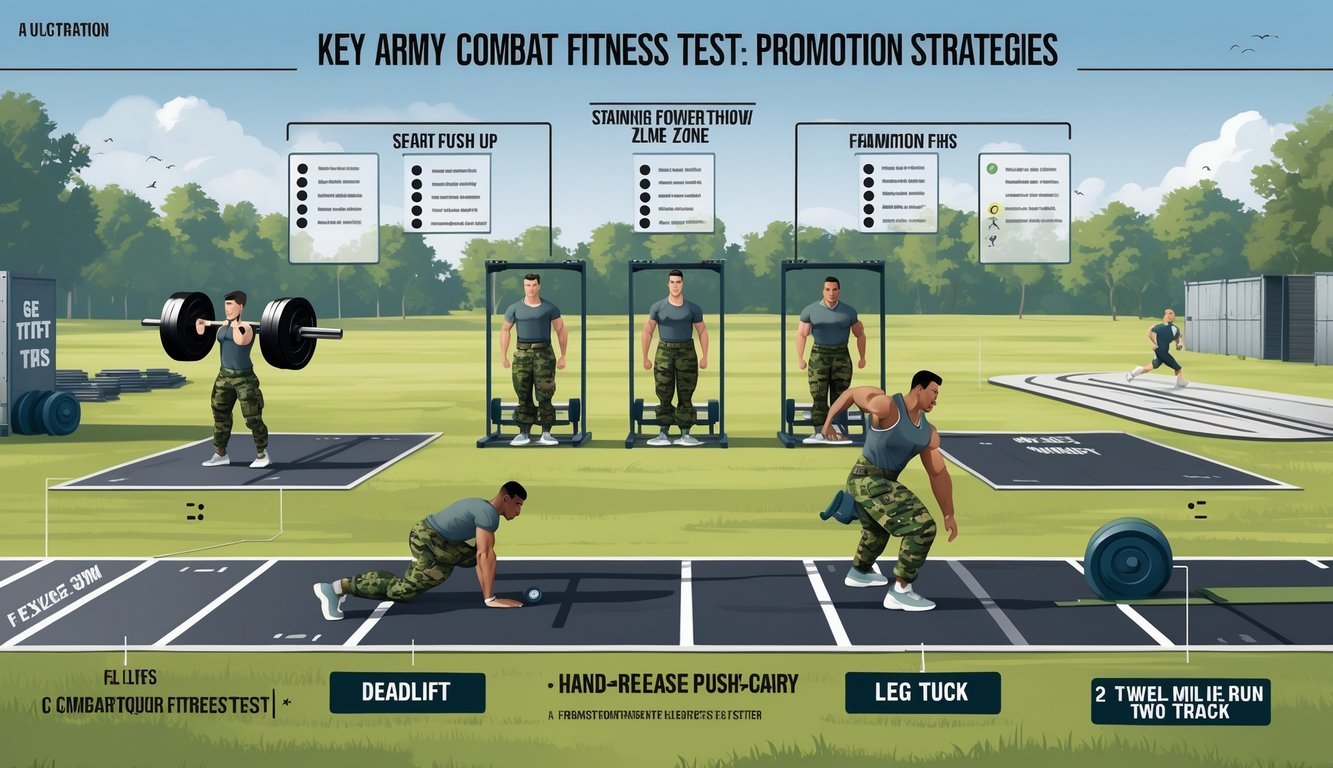Physical Address
304 North Cardinal St.
Dorchester Center, MA 02124
Physical Address
304 North Cardinal St.
Dorchester Center, MA 02124
ACFT scores directly impact Army promotion points, with performance in six events determining eligibility for advancement, especially to Sergeant and Staff Sergeant ranks.

If you’re gunning for a promotion in the Army, you really need to get how ACFT promotion points work.
The Army Combat Fitness Test (ACFT) scores now count directly toward the points you need for moving up, especially if you’re aiming for Sergeant or Staff Sergeant.
Knowing the changes—and how the Army hands out points—lets you plan your training smarter and rack up a better score.
ACFT scores feed right into your promotion points, but the system shifted recently.
Physical fitness doesn’t count for quite as much as it used to.
You’ve got to keep track of your progress and figure out which events really matter for your total points.
That way, you can zero in on what’s actually going to help you get promoted.
If you get a handle on the ACFT and how the points work, you can boost your fitness and your shot at promotion.
This guide breaks down what you need to know and throws in a few tips to help you get ahead.

If you want to grab promotion points through the ACFT, you’ll need to know how your performance adds up.
You also need to know how the Army crunches those numbers and what the minimum scores are to get any points at all.
Your ACFT results play a huge role in how many promotion points you walk away with.
Since April 2024, the Army swapped out the old fitness tests for the ACFT when it comes to promotion points.
Physical fitness now maxes out at 120 points instead of the old 180.
The Army uses a normed scoring system, comparing your score to a standard instead of just a pass/fail.
Basically, the better you do compared to the standard, the more points you get.
High scores can really help you jump to Sergeant or higher.
To figure out your ACFT promotion points, the Army adds up your scores across all six events.
They use a formula that puts your score into a certain range.
Here’s a quick look at how the points break down:
| ACFT Score Range | Promotion Points Earned |
|---|---|
| 600 – 670+ | Maximum points (120) |
| 540 – 599 | Moderate points (around 90) |
| 360 – 539 | Lower points (about 60) |
| Below 360 | No points |
Try an ACFT calculator online to get a ballpark estimate of your promotion points.
Always check the latest Army regulations, though—they do like to tweak things from time to time.
To get any promotion points at all, you need to hit the ACFT’s minimum passing score.
Right now, that’s usually a combined score of 360 across all six events.
If you score less than that, you get zero promotion points.
Simple as that.
You’ve also got to stay within the weight and height standards to stay eligible.
The Army checks these as part of your overall readiness.
The ACFT scores you turn in before May 31, 2025, will count for promotion until September 30, 2025.
So you’ve got a window to boost your score or learn how it affects your promotion odds before the next cycle.

If you want to rack up good promotion points on the ACFT, you’ll need to work on both strength and endurance.
Every event tests something different, so you’ve got to balance your training.
Don’t forget—good form and recovery are just as important as the workout itself.
The maximum deadlift checks your leg and back strength.
You’ll lift a barbell that’s usually somewhere between 140 and 340 pounds.
If you want to get better, focus on strength training with kettlebells and barbells.
Keep your back straight and drive with your legs—nobody wants a back injury.
The standing power throw uses a 10-pound medicine ball.
You’ll throw it backwards as far as you can, which tests your explosive power.
Work on your hip drive and balance, and make sure you’re getting enough rest between throws to keep your power up.
These two events really show off your raw strength.
Eat well and improve slowly—pushing too fast leads to injuries.
Hand-release push-ups are all about upper body strength and coordination.
You’ll drop to the floor, lift your hands, then push back up.
It’s tougher than regular push-ups, trust me.
Focus on your form and don’t forget to breathe right.
The sprint-drag-carry is a wild mix of speed, agility, and endurance.
You’ll sprint, drag a sled, shuffle sideways, and carry weights.
Interval training and sled drags can help you get faster.
Try to pace yourself but keep the intensity up.
Both events need strength and cardio.
Warm up and cool down properly or you’ll regret it the next day.
The plank checks your core strength and balance.
Hold a straight line and don’t let your hips sag—easier said than done.
To get better, add a few seconds to your hold each week.
The two-mile run tests your endurance and cardio fitness.
Pick a pace that’s tough but not impossible, and build up your stamina over time.
If your core is strong from planks, your running form will be steadier.
Mixing balance work with cardio training can boost your ACFT scores overall.
Don’t skip rest days, and drink plenty of water—your muscles will thank you.

You’ll earn promotion points based on your ACFT score through official conversion tables.
The Army updates the system every so often, so it’s worth keeping an eye on changes.
Match your total ACFT score to the promotion points chart.
The higher your score, the more points you get—it’s pretty straightforward.
The table assigns point values based on your ACFT score range.
If you get a perfect score, you’ll snag the max points allowed in the military training category.
The Army adds up your ACFT score and matches it to the promotion points scale.
They add those points to other areas, like weapons qualification and military education, to get your total promotion score.
Yes, they are.
Starting October 1, 2025, you’ll need officially recorded ACFT scores for promotion points.
This might change how things are tracked and awarded.
Nope.
Each ACFT event counts differently toward your total score, but the Army only uses your overall score for promotion points.
Individual event scores don’t get their own points.
Weapons qualification points and ACFT promotion points are two separate things.
Each adds to your total military training promotion points, but the Army counts them independently.
If you score high in both, you’ll see a nice bump in your overall promotion score.
So, it really pays to focus on both areas.